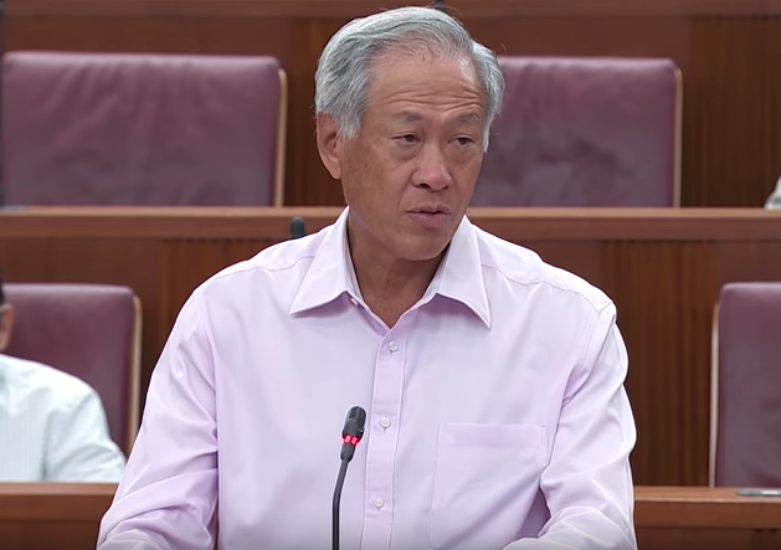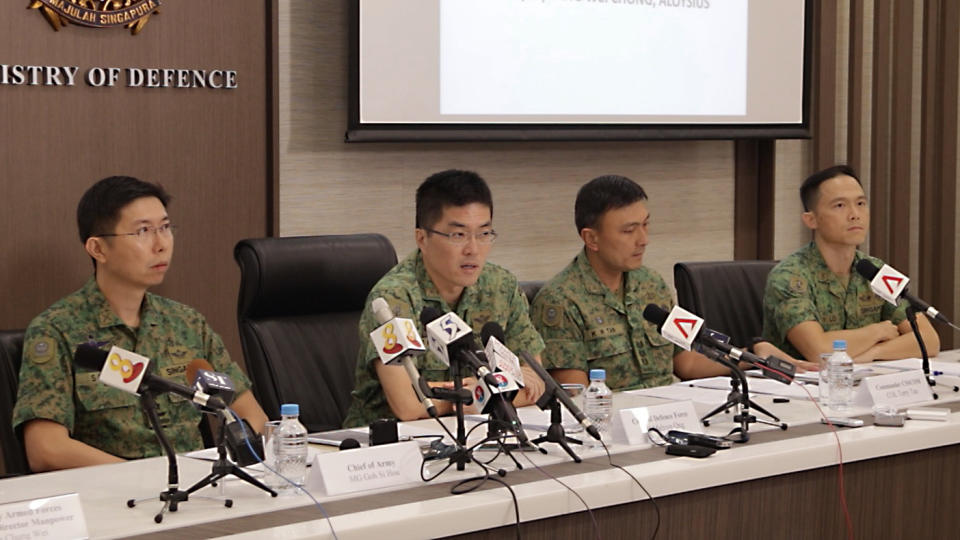COMMENT: Are we seeing a changed Ministry of Defence?

When Defence Minister Ng Eng Hen rose in Parliament on Monday (11 February) to try and heal the raw wounds that the recent National Service training-related deaths have opened, we saw a different man.
No more the stern-looking politician who joined the People’s Action Party (PAP) as part of the so-called Super Seven group in 2001, DPM Tharman Shanmugaratnam being one of the notable members of that team. The cancer-surgeon-turned politician used to show shades of the late Lee Kuan Yew in the way he spoke and expressed his body language.
Very early in his political career, as Acting Manpower Minister, Dr Ng displayed this “don’t-mess-with-me” characteristic when he chewed out two Nanyang Technological University economists for releasing statistics that showed most of the jobs created between 1998 and 2003 went to foreigners.
In a high-profile press conference, Dr Ng said his ministry’s statistics showed just the opposite. If your figures are right, you must not sensationalise. If they are wrong, then it is irresponsible and unprofessional, he admonished Tan Khee Giap and Chen Kang publicly.
Sixteen years later, we saw a man mellowed by a new Singapore stunned by four training-related deaths in 16 months, especially that of actor Aloysius Pang. The Channel 8 star’s celebrity status made his story a national one, becoming a talking point especially in Mandarin-speaking homes. Not to forget, residents in these homes make up a very important voting bloc for the PAP.
As the 60-year-old reached the tail end of his Ministerial Statement and as he spoke of the value and necessity of NS, bringing up the examples of Iraq’s invasion of Kuwait and the economic blockade of tiny Qatar by mighty Saudi Arabia and its other neighbours, his voice quivered a little.
A changed ministry?

The Ministry of Defence (Mindef) is also showing signs of a ministry trying very hard to be transparent, with top commanders answering queries from mainstream media at length and even opening up to some segments of the online media.
Days before Dr Ng’s speech, Mindef officers went to the office of at least one online media outlet to brief its journalists on what the Minister was going to say. The ministry even released a video showing how the Singapore Self-Propelled Howitzer (SSPH) gun barrel is lowered, even though it must have known that it was frightening to watch as one could imagine how Pang could have been crushed between the end of the gun barrel and the SSPH cabin.
A lot of the information given in Parliament by Dr Ng came from a preliminary investigation of an earlier incident when a Bionix vehicle reversed and crashed into a Land Rover, killing full-time national serviceman Liu Kai. Mindef and other government organisations are well-known for hiding behind the oft-used phrase “preliminary investigation” because of the fear that such information can prejudice a case. Ng’s release of the preliminary findings was therefore highly unusual, given Mindef’s secretive nature.
There was a time when the ministry’s statements on such mishaps had just one brief paragraph. For journalists reporting on defence matters, it was like shooting in the dark. Said a former reporter, “It was always the standard ‘we will assess and get back to you again’. Then no sound until you keep chasing them.”
All the new moves, though to be welcomed, are just band aids if the culture of safety is not ingrained in all of SAF staff. For that to happen, that culture has to start at the top. The leadership at every level must show by example that those who commit safety breaches, wherever he is in the hierarchy, will not be tolerated. And those down the line must be convinced that when they report lapses they will be taken seriously, not penalised.
In short, the fear of reporting a supervisor’s lackadaisical approach to safety must be removed once and for all. Said a former NSman: “In my time in the 90s, we were all expected to just obey orders and get on with it. Even something as simple as a survey regarding the quality of the lunch at the cookhouse could get you a telling-off if not enough men gave it a good ranking.”
I hope that kind of fear doesn’t exist today.
P N Balji is a veteran Singaporean journalist who was formerly chief editor of Today, as well as an editor at The New Paper. He is currently a media consultant. The views expressed are his own.
Related stories
Aloysius Pang’s death: ‘Don’t cry, mom. If you cry, I will cry too’
NSF Liu Kai’s death: Bionix driver kept reversing despite commands to stop



